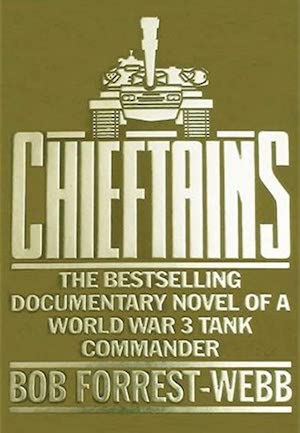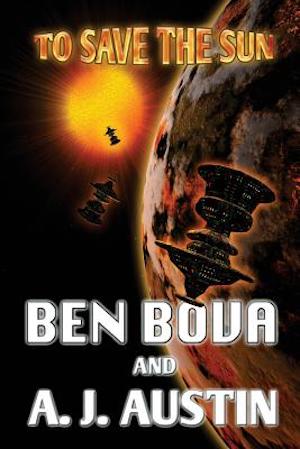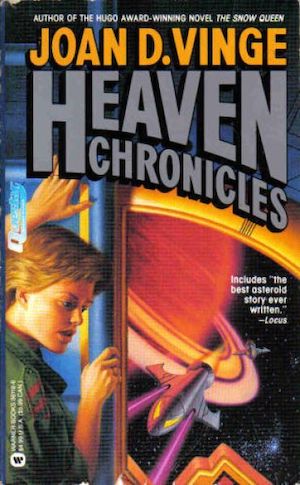As mentioned in a previous essay, Dean Ing’s Ted Quantrill trilogy, which takes place during and after World War Four, is set in another’s author’s world. It borrows its backstory from General Sir John Hackett’s 1978 The Third World War. Where Hackett thought his conflict would lead, I cannot say. Ing used it as a springboard for an entirely more science-fiction-y scenario involving orbital weapons, biological warfare, and weaponized Canadian chocolate.
While it’s not exactly common for speculative fiction authors to write sequels to each other’s work, it is also not incredibly uncommon. I would imagine the usual process is something along the lines of an author reading someone else’s work, being inspired, and after getting permission, penning their own sequel. Do not disabuse me of this optimistic scenario.
To be honest, I found Hackett’s The Third World War a bit of a slog; its dry prose read like a dull, textbook recounting of the nuclear destruction of two cities. Clearly, other readers disagreed: not only was Hackett’s book a bestseller, but it spawned a number of sequels in addition to Ing’s trilogy.

Team Yankee: A Novel of World War III by Harold Coyle (1987) may not be a sequel in the exact sense of the word, as it is set concurrent with Hackett’s book, rather than (as with the Ing) following it. Where Hackett provided a bird’s-eye view of the war, Coyle focused on the Team Yankee of the title, an armor-heavy company-sized unit, as it engages the enemy in various battles across Europe. The shift from omniscience to specific viewpoint not only made the resulting novel distinct from Hackett’s, it proved popular enough to kickstart Coyle’s career and attracted adaptation into such media as board games and comic books.

Robert Forrest-Webb’s 1982 Chieftains also seems to have taken The Third World War as its starting point. Like the later Coyle, the author rejects the omniscient perspective for that of a specific unit. Forrest-Webb takes a British viewpoint, that of Sergeant Morgan Davis and the rest of the crew of Chieftain Bravo Two. The reader is treated to yet another sequence of thrilling battlefield encounters between NATO and Warsaw Pact forces. Unlike Coyle (and Hackett, for that matter), Forrest-Webb diverges dramatically from the inspirational material in his assessment of how the Soviets would react to the prospect of losing a conventional war in Europe. As far as I know, there’s never been a sequel to Chieftains and if there were, it would probably be more akin to the vintage SPI wargame NATO than Ing’s trilogy.

Let’s look at another work that inspired a sequel by yet another author: Gordon R. Dickson’s 1967 Nebula-winner Call Him Lord. It’s a succinct tale of a spoiled royal heir discovering too late that he is subject to a draconian pass/fail test. Ben Bova and A.J. Austin’s 1992 To Save the Sun (which thanks Dickson in its acknowledgments) picks up the plot years later. The late prince’s surviving brother is faced with the choice of saving the planet where his brother died or allowing nature to take its course and erase his brother’s killers. The title is something of a broad hint as to how things work out.

Finally, there is the curious matter of Joan D. Vinge’s 1978 Outcasts of Heaven Belt, which shares a setting with Vernor Vinge’s Zones of Thought stories, which included The Blabber (1988), A Fire Upon the Deep (1992), A Deepness in the Sky (1999), and The Children of the Sky (2011). Vinge explained the genesis of her novel and the connection to the Zones in a 2008 letter to her readers. Until I read that letter, I had no idea there was a connection.
It isn’t so odd that that the Vinges, who were then married, might share background material. See, for example, the inextricably entangled works of Kuttner and Moore. However, what makes this stand out for me is that Joan D. Vinge’s novel saw print long before Vernor Vinge turned his background notes into fiction. In a sense, Vernor’s books could be seen as sequels to Outcasts. At the very least, the publication timeline is unusual.
***
No doubt there are many other examples I could have used. (Note that I didn’t count shared universes like Wild Cards. That’s just too easy.) If I overlooked one of your favourites, please feel free to mention it in comments below.
In the words of fanfiction author Musty181, four-time Hugo finalist, prolific book reviewer, and perennial Darwin Award nominee James Davis Nicoll “looks like a default mii with glasses.” His work has appeared in Interzone, Publishers Weekly and Romantic Times as well as on his own websites, James Nicoll Reviews (where he is assisted by editor Karen Lofstrom and web person Adrienne L. Travis) and the 2021 and 2022 Aurora Award finalist Young People Read Old SFF (where he is assisted by web person Adrienne L. Travis). His Patreon can be found here.










